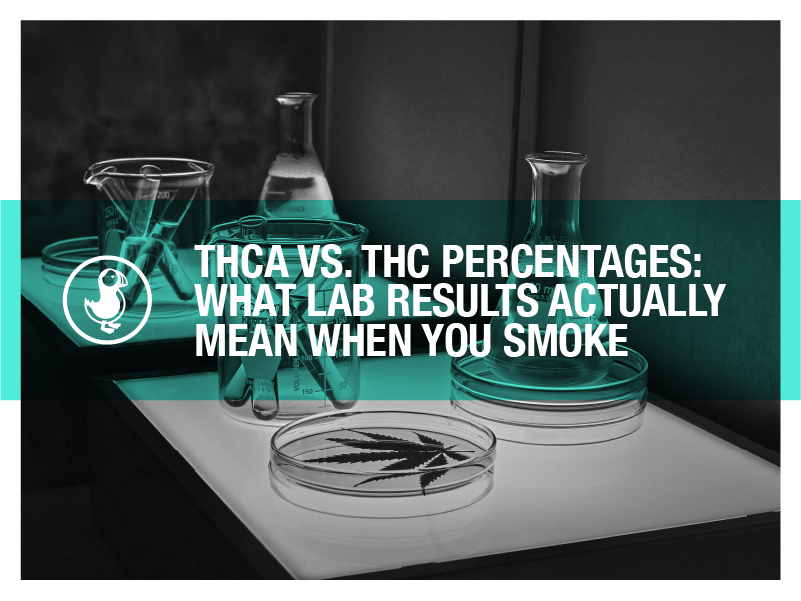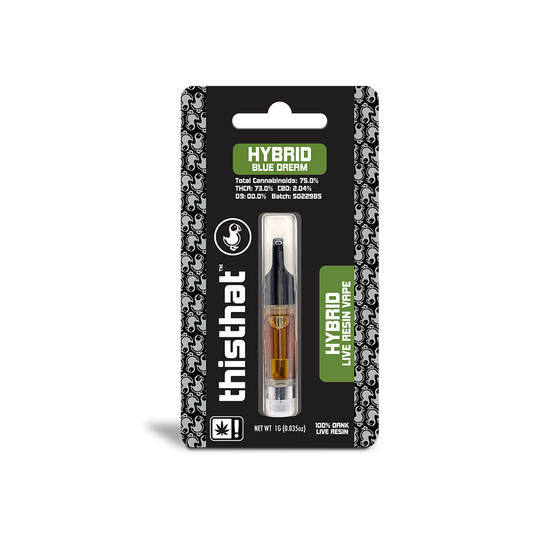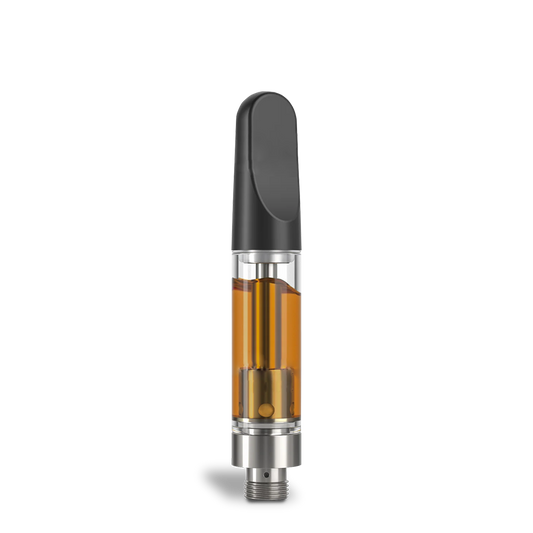THCA vs. THC Percentages: What Lab Results Actually Mean When You Smoke

Unlock 20% Off Your First Order –Shop Now and Save on Premium THCA Products!
Why Lab Results Matter More Than You Think
When shopping for cannabis flower, lab results can feel like a numbers game. Higher THC = stronger, right?
Not always.
Especially with THCA flower, understanding how to read those percentages correctly can make or break your smoking experience. Let’s decode those lab reports and unpack what they really mean when heat (and lungs) get involved.
The Science Behind THCA and THC
-
THCA (Tetrahydrocannabinolic acid): The raw, non-psychoactive form of THC found in live or uncured cannabis.
-
THC (Delta-9 THC): The active psychoactive compound that delivers the high once THCA is heated (via smoking, vaping, or baking).
Decarboxylation is the magic moment: the process where heat converts THCA into THC.
Why THCA Percent Is Usually Higher on Flower
In most flower, the lab report shows two key numbers:
-
THCA Percentage: Often 15–25% (or more)
-
Delta-9 THC Percentage: Often below 1%
Don’t worry—that doesn’t mean it’s weak. The high comes when THCA converts into Delta-9 during combustion.
How to Calculate Total Potential THC
Here’s how labs estimate how much usable THC is actually in that flower:
Total THC = (THCA x 0.877) + Delta-9 THCThe 0.877 accounts for the weight loss when THCA loses its carboxyl group (CO2) during heating.
Example:
-
THCA: 22.5%
-
Delta-9 THC: 0.5%
Total THC = (22.5 x 0.877) + 0.5 = ~20.2%
So that strain is roughly 20.2% actual THC once smoked.
Why You Shouldn’t Ignore THCA
For THCA flower users:
-
THCA is the main indicator of how strong your high will be.
-
Delta-9 on flower reports is almost irrelevant unless it's pre-decarbed (e.g., in edibles).
-
More THCA means more THC post-combustion.
But don’t chase numbers blindly—there’s more to the high than just percent.
Terpenes, Cannabinoids & the Entourage Effect
A flower with 18% THCA and robust terpenes might feel stronger than a 26% THCA strain with bland genetics. Why?
-
Terpenes like myrcene, limonene, and pinene shape how you experience the high.
-
Minor cannabinoids (CBG, CBC, etc.) add dimension.
-
The entourage effect creates synergy that can elevate or balance the high.
THCA vs. Delta-9 THC on Concentrates
In extracts, ratios shift:
-
Live rosin and THCA diamonds are almost pure THCA (70–95%)
-
Distillates show high Delta-9 THC already activated
Knowing whether your dab is raw THCA or active THC helps you predict potency and onset.
Common Misconceptions
Myth 1: "High THC means it’s better."
-
Not always. Flavor, terpene content, and your body chemistry all play a role.
Myth 2: "Low Delta-9 = weak flower."
-
Nope. Most Delta-9 THC is created when THCA combusts. Look at total THC.
Myth 3: "All high THCA flower hits the same."
-
One 25% strain might energize. Another might knock you out. Know your terps.
How thisthat CBD Helps Break It Down
At thisthat CBD, we don’t just post lab results—we help you understand them:
-
Every strain has a detailed COA (certificate of analysis)
-
We include total THC calculations
-
Our product pages break down strain effects and dominant terpenes
Our goal? Help you shop smart and smoke better.
Final Hit: Read Past the Numbers
Lab results are helpful—but they’re only part of the picture.
THCA percentage is your main gauge, but context matters:
-
Terpene profile
-
Strain type (indica/sativa/hybrid)
-
Your tolerance
-
Consumption method
Next time you check a COA, do the math, read the terps, and trust your body.
Because the best high isn’t just strong—it’s the right one for you.
Need help decoding a COA? Visit [thisthatcbd.com] or DM us—we’ve got your back.
No comments















0 comments